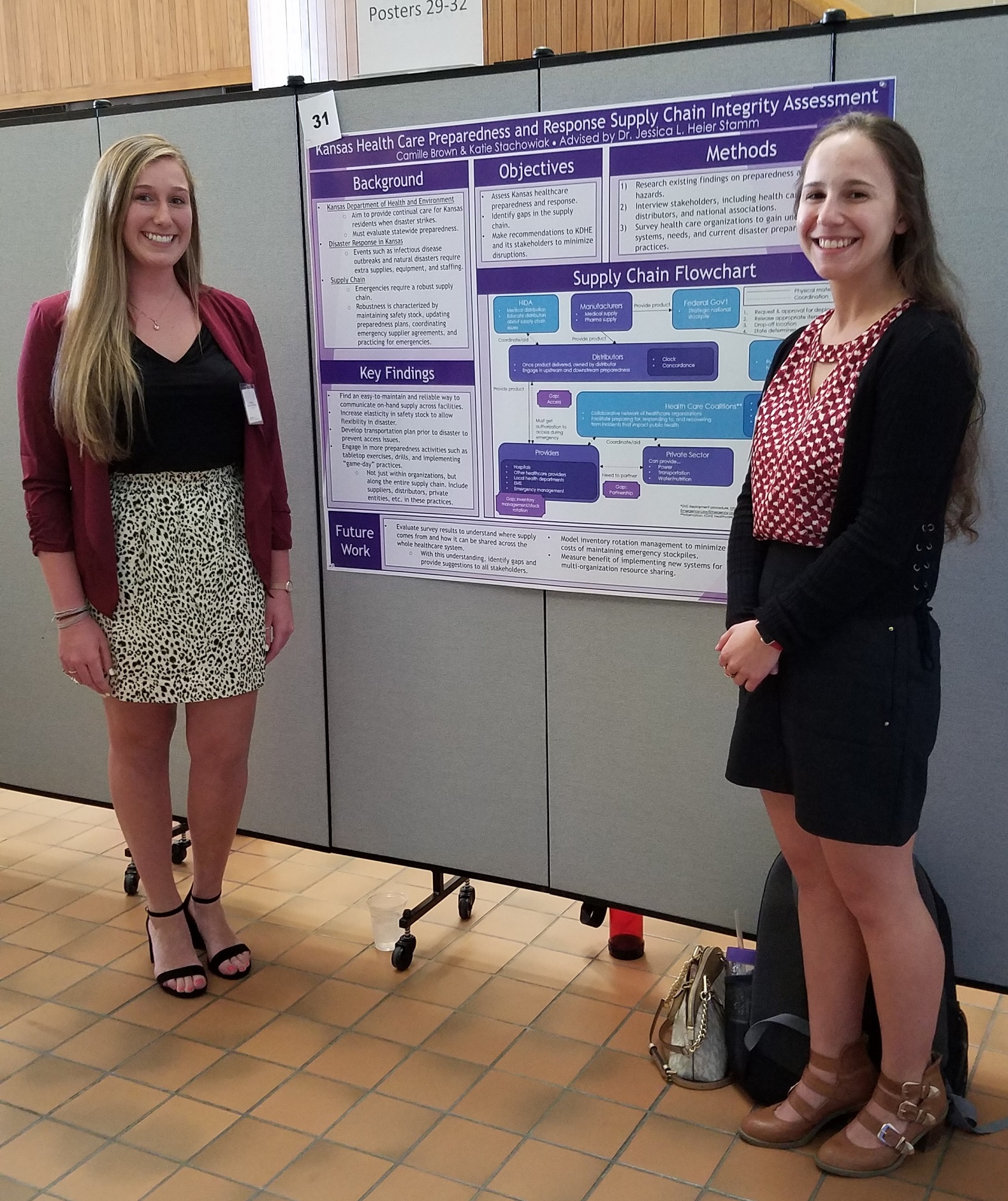IMSE Research Projects Utilize Undergraduates' Skills
IMSE undergraduate students are increasingly engaged in faculty research, which allows them to explore their interests more deeply and develop advanced skills such as experimental design analysis and technical communication. They also gain professional attributes such as initiative and accountability. Faculty get creative minds and additional hands to support their work.
IMSE undergraduate research projects and faculty leaders include the following:
Quentin Ricketts, senior, is working with Shing Chang to advance 3D printing process monitoring. With use of machine learning, a camera and image-processing software,  Chang and his students are making the process of 3D printing more efficient and economical. Depending on size and quality of a model, it can take anywhere from 10 minutes to several hours to 3D print a finished product. What if an engineer is unable to stay within reach of the 3D printer for the entire duration? Chang’s team has developed a system to monitor the 3D printing process remotely, allowing engineers to catch any possible printing malfunctions quickly, saving time and lost materials. Ricketts hopes to continue developing the monitoring software to increase printing quality and efficiency.
Chang and his students are making the process of 3D printing more efficient and economical. Depending on size and quality of a model, it can take anywhere from 10 minutes to several hours to 3D print a finished product. What if an engineer is unable to stay within reach of the 3D printer for the entire duration? Chang’s team has developed a system to monitor the 3D printing process remotely, allowing engineers to catch any possible printing malfunctions quickly, saving time and lost materials. Ricketts hopes to continue developing the monitoring software to increase printing quality and efficiency.
Dakota Angell, senior, is working with Shuting Lei and graduate student, Guang Yang, to study the effects of laser irradiation on the static contact angle of an aluminum alloy under different stress conditions. By understanding how specific surface properties affect surface wetting and stability, the hydrophobicity of a surface can be enhanced to benefit a wide range of applications. While this study uses samples of 2024-T3 aluminum alloy widely used in the aerospace industry, it could also be applied to other units such as pipelines, solar panels or naval vessels.
Camille Brown and Katie Stachowiak, both B.S./M.S. seniors under the supervision of Jessica Heier Stamm, are  evaluating statewide preparedness and response to ensure public health organizations can provide continual care for Kansas residents. The team’s analysis identified a need for better communication among facilities to track on-hand supplies and improve the supply chain system’s ability to adapt to different emergency situations. Brown and Stachowiak will continue working with Heier Stamm to analyze survey results and better understand where supplies come from and how they can be shared across the entire healthcare system. This work will provide the foundation for future research to optimize inventory rotation management and coordination among organizations. Brown and Stachowiak won first-place honors in the Engineering Undergraduate Research and Creative Inquiry Showcase for their presentation on this research.
evaluating statewide preparedness and response to ensure public health organizations can provide continual care for Kansas residents. The team’s analysis identified a need for better communication among facilities to track on-hand supplies and improve the supply chain system’s ability to adapt to different emergency situations. Brown and Stachowiak will continue working with Heier Stamm to analyze survey results and better understand where supplies come from and how they can be shared across the entire healthcare system. This work will provide the foundation for future research to optimize inventory rotation management and coordination among organizations. Brown and Stachowiak won first-place honors in the Engineering Undergraduate Research and Creative Inquiry Showcase for their presentation on this research.